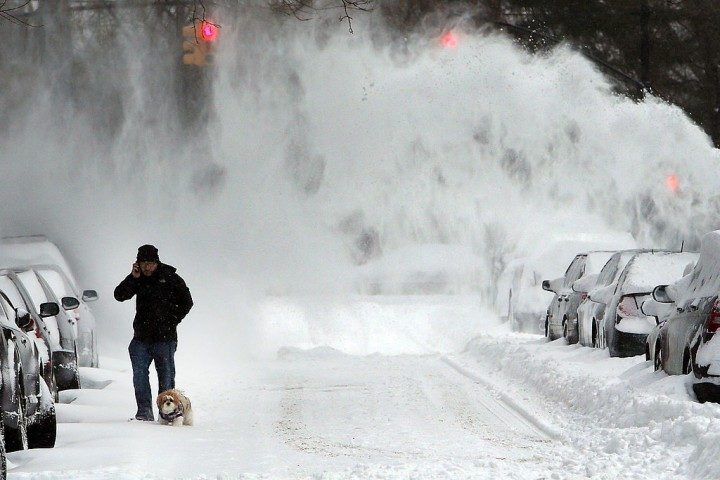
The moment was captured by Brett Soderholm, his meteorologist companion, and the video was uploaded on YouTube. The clip went viral as soon as it was posted, with some lauding Buss for the stunt. The clip showed Buss walking into the fierce wind formation then disappearing as soon he got close.
CTV news spoke with Soderholm who shared that he also followed his friend right after disappearing in the rare snownado. Soderholm said he did not want to miss the rare opportunity. Soderholm described the experience as "painful."
"There were fierce winds swirling around me with little pieces of ice chucked up against my face," he said.
Snownado is also known as snow devil. An explanation about the phenomenon was given by Minnesota Public Radio's chief meteorologist Paul Huttner on his blog in 2013, after Jordan Deters captured on cam a snownado at the western Lake Superior that occurred in the same year.
"Winter waterspouts occur when meteorological conditions are just right. You need a bitter arctic air mass passing over relatively warm lake water, and just enough light, low level wind shear to get the rapidly rising air currents spinning nicely," Huttner explained.
According to a report published by Daily Mail, colliding air currents are causing the spin. As the winds rotate and move, it picks up snow and creates a funnel shape snownado.
As per Science Explorer, snownado or snow devil is comparable to water sprouts; only instead of forming above bodies of water, snownado forms in snow-covered lakes or other frozen areas.
Because it requires a certain condition, snownadoes are rare. Only six of those have ever been captured on camera.
Last February, the phenomenon was reportedly seen on the Scottish mountains. The Sun reported it was at least 100 feet high and formed near a car park in Cairngorm near Avienmore in Scotland.



Reader Comments
to our Newsletter